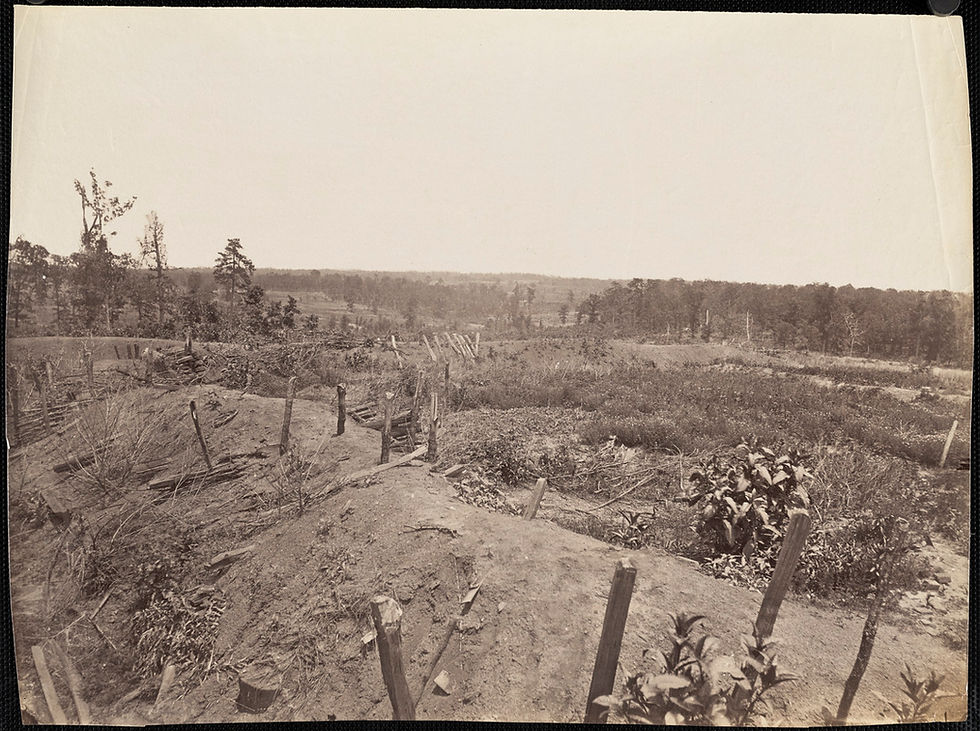The Men Out Front; Birge's Western Sharpshooters a.k.a. the 66th Illinois
- Gordon Thorsby
- May 12, 2021
- 4 min read
Updated: Jul 22, 2021
by Gordon Thorsby

Sharpshooter regiments received fame in varying degrees. Hiram Berdan's Union eastern sharpshooters always come to mind, as do Confederate units like the Whitworth Sharpshooters. Skirmishers were a fundamental need of Civil War military tactics, whether identifying strengths in the enemy or delaying larger scale advances. Where entrenched warfare increased as a normal practice as war ground on, the sharpshooter was invaluable on both sides.
The Sharpshooter group of “Birge’s Western Sharpshooters” may be a unit that is less known. Their abilities were no less than others and they proved their worth. They were officially formed on November 23, 1861 in St. Louis Missouri, at Benton Barracks and made from men all over the Civil War's “West." One company were entirely Missouri men, the next from Illinois, then Ohio, and then a company of Michigan boys. Add a sprinkling of Iowa, Indiana, and Minnesota marksmen in companies with names like Reed’s, Taylor’s, and Dougherty’s Sharpshooters, or the companies of Boyd’s Missouri Company and Welker’s Company (also sharpshooters.) and there were almost ten companies. The regiment was represented by virtually every western state.
Maj. General John C. Fremont wanted his own group of specially trained sharpshooters since the Eastern Theater had Berdan’s famous regiment. The origin of this regiment to-be was of J.W. (John Ward) Birge, but it gathered traction and approval from Fremont’s force. Fremont required that the soldiers there would “have produced satisfactory evidence of their ability to hit a target at two hundred yards, no three shots to measure more than ten inches.” With the mustering, Birge was made Colonel of the “Birge’s Western Sharpshooters.”

The regiment would have a particular dress that Fremont insisted for the unit. The idea of a frontier look and special rifles that received “alterations” was Fremont's making. When Fremont went afoul of the administration policies with Washington, he was quickly yanked and replaced by Major General Henry Halleck. Halleck being a more “by the book” type would have nothing to do with the uniforms. Union standard blue was the dress. For the firearm, a customized Dimick Long rifle and some small use of the Henry Repeating Rifle, did receive the go ahead and Halleck made sure the regiment had a full complement of ten companies.
After their appearance at Shiloh in April, 1862, Halleck altered the Sharpshooters' designation to the 14th Missouri of Birge’s Sharpshooters. In July, 1862, Patrick Burke became its new colonel and the regiment continued their skirmishing work as part of a very, very, very slow, deliberate march of the Army by Halleck on to Corinth. Did I mention how slow Halleck's advance was?

The 14th Missouri of Birge's Sharpshooters marched with its new moniker as 1862 carried on. At Second Corinth, fighting was vicious on all fronts and Union Army commander Major General William Rosecrans held back some of his men The result was Federal troops, including the Sharpshooters, forced back under the pressure of attacking regiments from Confederate Generals Price and Van Dorn. The 14th fellback into Battery Robinette and continued to deliver a deadly fire to assaulting lines of determined attackers. In the fight for Battery Robinette, the Sharpshooters fought beside Yate’s 64th Illinois Sharpshooters. Yates having strong political influence, had the 64th and 14th merged into a new regiment and they became 66th Illinois Western Sharpshooters, but were commanded by Colonel Burke.
Remaining in the Corinth area in 1862 and much of 1863, the regiment was fully equipped with the Henry Repeating Rifle, making them an even more powerful unit on the battlefield. When Sherman moved towards Atlanta, the 66th went along as part of the Army of the Tennessee and Major General Grenville Dodge’s XVI Corps. It was there, that the merged 66th was in combat for most of 120 straight days. In May, they cleared Wheeler’s blocking force of cavalry at Snake Creek Gap. Days later, the 66th advanced and held positions at Rome Crossroads around the battlefield of Resaca until nightfall. Their previous commander, Col. Patrick Burke fell mortally wounded at Rome.

At Ruff’s Mill in early July, the regiment was involved in their specialty in almost every place. They were out in front as part of the push across the Chattahoochee. At the First Battle of Atlanta, the 66th was heavily engaged and casualties were extremely high, especially among its officers. For those who fought there, everyone would remember the fight for Bald Hill. On through to the end of the Atlanta Campaign, the 66th suffered 225 casualties in killed and wounded. The original Sharpshooters had "seen the elephant" many times in 1864.
The regiment, reduced due to expiration of enlistments, continued to the Sea and through the Carolinas as a part of Major General John “Black Jack” Logan’s Corps.
In the Carolinas, they were lightly involved at Bentonville, Goldsboro, and in the capture of Raleigh.
With victory came parades, and the 66th Illinois proudly marched down Pennsylvania Avenue. The regiment proceeded by train back through places they knew which raised memories of four years of war, and finally to Illinois. Here they were paid off and mustered out to go home in early July.
Today, if anyone sees a dusty, musty GAR book and a man from the 66th Illinois signature in it, you might see the veteran’s name with a postscript of “W.S.S.”, “the Western Sharpshooters.”
Bibliography:
To The Gates of Atlanta From Kennesaw Mountain to Peachtree Creek, by Jenkins Sr,, Robert D., Mercer University Press, 2015.
The Terrible Swift Sword, Catton, Bruce, Doubleday and Company, 1965.
Https:// Illinois Civil WarGenealogy.org.
Civil War Archives online.
Photos, from Library of Congress,
Pictures by Currier and Ives.






According to the history of Birge's regiment, it was actually formed before Berdan's sharpshooters were organized.